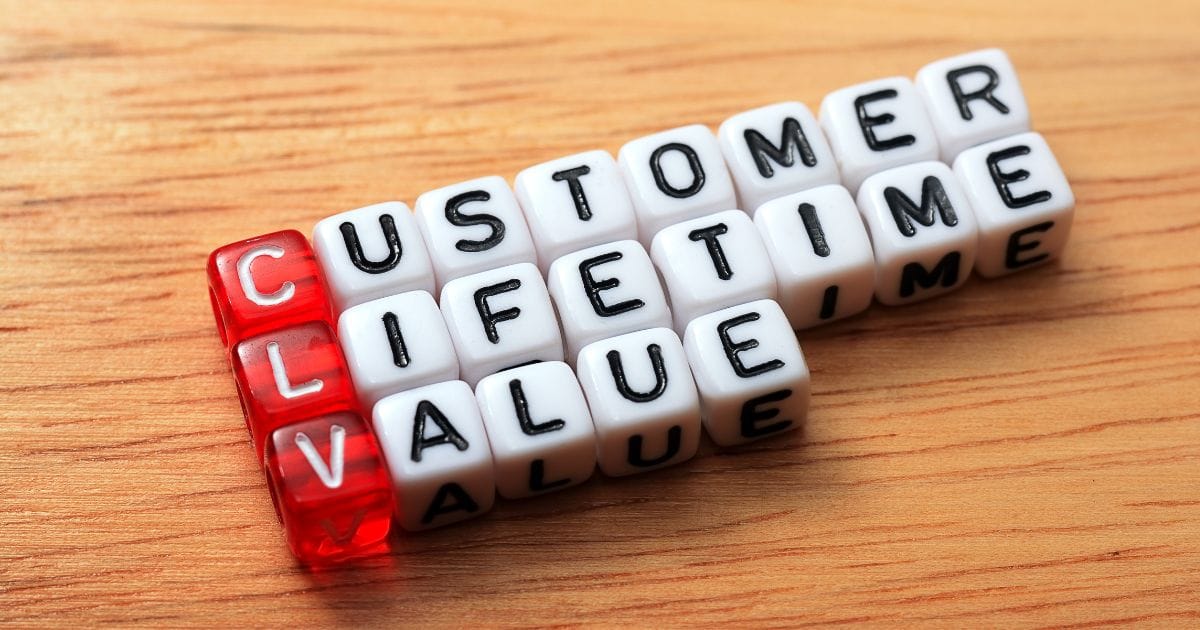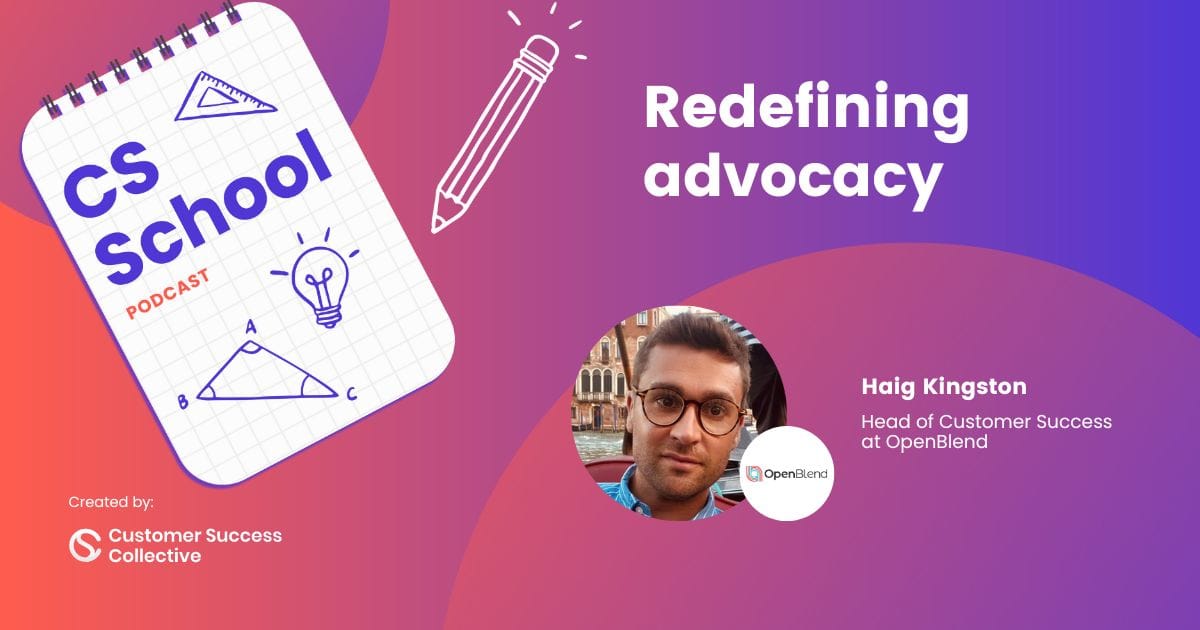You know it, I know it – customer success goes way beyond mere service delivery. It's about cultivating deep, meaningful relationships that transcend traditional business transactions.
Like many Customer Success Managers, I’ve dedicated my customer success career to fostering genuine connections with my clients, guiding them through their journeys, and advocating for their needs every step of the way. This step is fundamental to being a good CSM.
In this article, I'll share insights on building lasting rapport with clients, the criticality of effective communication, and the ultimate goal of transforming satisfied customers into vocal advocates for our brands.
We'll be specifically looking at:
- How advocacy functions in the tech industry
- The importance of a smooth sales-to-customer-success handoff
- The art of building rapport for customer retention
- Tips for building rapport as a new CSM
- Committing to customer advocacy
- The crucial role of overcommunication in customer success
The evolution of customer advocacy in tech
My journey into customer success is deeply rooted in my tenure with several SaaS companies, where I dedicated my career to technology and customer interactions.
Initially, my role revolved around selling to small to midsize businesses, gradually expanding into the mid-market and enterprise sectors, including strategic accounts. This expansion was not just about scaling in terms of business size but also involved a significant evolution in the nature of customer interactions.
As I engaged with larger customers, I noticed a distinct shift in the conversations we had. Unlike the transactional discussions that often characterize smaller deals, conversations with larger clients were more intricate and involved.
Scaling business through deep customer understanding
It went beyond just closing a sale; it became about understanding our customers on a deeper level. This process included getting to know their internal decision-making processes, their organizational dynamics, and sometimes, even the personal backgrounds of key decision-makers. The more I learned about them, the more personalized and effective my approach could become.
This shift in interaction was a turning point for me. I've always believed in the power of relationships in sales, but it was through these detailed, rich conversations that I truly realized the value of deeply understanding my clients.
It was immensely rewarding to build such strong rapport with customers, not just for the sake of sales but to genuinely assist them in achieving their goals in the most effective way possible. The impact of this approach was profound, both for the customers and for me personally.
The satisfaction derived from seeing my clients succeed, coupled with the realization of how crucial my role was in their journey, prompted a significant career decision. It was this fulfilling experience of customer engagement and advocacy that led me to pivot fully into the realm of customer success.
The importance of a smooth sales-to-customer-success handoff
The transition from sales to customer success is a pivotal moment in the customer journey, and its significance cannot be overstated. This handoff is critical because it lays the foundation for the ongoing relationship and support that will help customers achieve their goals.
In my experience, this phase is often challenging for many organizations to execute flawlessly, yet it remains essential for ensuring a smooth customer experience.
In the software industry, for instance, the handoff is not just a simple pass-over of responsibilities from sales to CS. It often involves an implementation phase, which serves as a bridge between the initial sale and ongoing support. This period is crucial for setting the stage for a successful partnership. Understanding and optimizing the implementation process are key components in delivering a positive start for the customer with the company.
The initial post-contract transitions, including the implementation phase, are critical moments where a lot can happen. These steps must be managed carefully to ensure that the customer feels supported and confident in their choice to engage with the product and the company. Providing a smooth transition from sales to customer success is imperative for building trust and rapport from the outset.
Bridging the gap between sales and customer success
The relationship between sales and CS is sometimes perceived as contentious, with differing objectives seen as a battleground between securing sales and nurturing customer success. However, the reality is that both roles are integral to the customer's journey and success.
In some cases, CSMs are involved in sales activities, such as renewals and expansions, which requires them to have a sales mindset. In other scenarios, CSMs focus solely on support and advocacy, without direct sales responsibilities.
Regardless of the structure, the collaboration and partnership between sales and customer success teams are vital for ensuring that the customer's journey from prospect to advocate is as seamless and positive as possible.
The art of building rapport for customer retention
Building rapport with customers is not just beneficial; it's essential for their journey and overall satisfaction. This connection begins the moment a customer starts their journey with us, moving from a prospect to a new customer, and ideally, to a long-term partner.
Rapport is crucial because it transforms an initial transaction into an enduring relationship. Our primary aim as CSMs is to avoid churn at all costs. We strive to extend our customers' lifespan with our company, supporting them in every way possible to ensure their retention and satisfaction.
Cultivating long-term relationships
Rapport allows us to guide customers through their journey, helping us understand their projects, challenges, and goals. This understanding enables us to identify new opportunities for support and expansion, turning every interaction into a chance to extend the lifetime value of the customer.
By advocating for our customers and fully grasping their objectives, we can liaise effectively with our executive teams to tailor our services and solutions to meet their needs. Our daily goal is to not just fulfill contract requirements or pursue expansions but to deliver an exceptional experience that reinforces the value we bring to their business.
Interestingly, the strength of these relationships often extends beyond the professional realm. I find myself still in contact with many former customers, a testament to the rapport we've built. These enduring connections sometimes even lead to new opportunities for collaboration, reflecting the deep trust and mutual respect established during our partnership.
At the core of customer success is trust and empathy, the true currency of our role. While it may seem overly sentimental compared to the more transactional nature of sales, genuinely caring for our customers is fundamental. It's about more than just business outcomes; it's about advocating for and supporting our customers in the most meaningful ways possible, representing our company in the best light, and enhancing the overall customer experience.
Going above and beyond for our customers is a reflection of our commitment to their success and satisfaction.
Tips for building rapport as a new CSM
For new CSMs looking to build rapport with their clients, empathy is the cornerstone.
Demonstrating empathy in every interaction, whether it be through meetings or calls, significantly impacts how customers perceive your concern and dedication to their success. It's crucial for them to feel that you genuinely care about their goals and are committed to helping them achieve those goals.
One effective approach to establishing this connection is through thoughtful questioning. Inquire about their projects, decision-making processes, and goals. For instance, understanding what factors influence their decisions, such as the critical elements that lead to signing a contract or prioritizing certain actions over others, can offer deep insights into their priorities and challenges.
Curiosity leads to customized support
Being naturally curious is an asset in this role. It encourages a deeper dive into the customer's operations, decision-making hierarchies, and the dynamics of their teams. This curiosity leads to a broader understanding of the organization's inner workings, which in turn enables you to tailor your support more effectively.
Specific questions to consider include:
- What are the key factors driving your decision-making process?
- Can you walk me through the timeline and critical milestones of your current project?
- Who are the main stakeholders involved in this project, and what are their roles?
- How are you evaluating the success of the project, and what metrics are you using?
These inquiries not only show your interest in their work but also help you gather essential information that can guide how you support them.

For example, if a customer needs training for their team by a certain date, understanding who needs to be trained, their roles, and the focus areas of the training can help you customize your approach for maximum impact.
Tools like Pendo can offer insights into how users are interacting with your platform, which can inform your strategy for presenting information or training materials. The goal is to align your support with the customer's specific needs and objectives as closely as possible.
Remember, the essence of building rapport lies in being genuinely interested and engaged with your customers. By being curious and asking insightful questions, you can better prepare yourself to meet their needs and, ultimately, contribute to their success.
Committing to customer advocacy
Showing your customers that you're in their corner from day one is imperative. This commitment often requires going above and beyond the conventional call of duty, especially when faced with challenges or “sticky points” in the relationship.
My approach has always been hands-on, ready to roll up my sleeves and dive into the issue myself, which has often involved personally monitoring support tickets and taking charge of escalations.
A prime example of this dedication is when a customer comes forward with a critical issue needing immediate resolution. In such scenarios, I've taken it upon myself to reach out directly to managers or executive team members, advocating passionately on behalf of the customer's needs.
This advocacy is crucial, particularly when a problem could have significant implications for the customer's operations or their own clients. My philosophy is that while we operate within a framework of guidelines and processes, there are moments when we must navigate outside these boundaries to address urgent customer needs effectively.
Navigating challenges together
However, not all situations can be resolved as desired, leading to moments of disappointment and strain in the customer relationship. In these instances, the rapport previously built can feel jeopardized. The challenge then becomes how to mend and strengthen the relationship moving forward.
Transparency and empathy are key in these moments. It's about acknowledging the situation, expressing sincere apologies, and demonstrating that some outcomes are beyond our control. The depth of the relationship between a customer and their CSM is unique and deeply valued. When issues arise, it's often the CSM who feels the weight of the customer's disappointment personally.
To rebuild rapport, it's crucial to engage in open, honest communication. Holding a post-issue meeting to debrief and decompress can be incredibly beneficial. This conversation offers an opportunity to reflect on what happened, how processes can be improved, and how to better support the customer moving forward. It's about showing the customer that their concerns are heard and that steps are being taken to prevent similar issues in the future.
Ultimately, the essence of customer success lies in consistently proving to your customers that you are there for them, ready to support, advocate, and navigate challenges together. This commitment to going above and beyond not only strengthens the bond with customers but also reinforces their trust and confidence in your ability to support their success.
The crucial role of overcommunication in customer success
In customer success, the adage that you can never communicate too much holds particularly true. Being the linchpin between the product, sales, and executive teams, and the customer means that maintaining an open, continuous line of communication is paramount.
Overcommunication ensures that there's no room for doubt in the customer's mind about your commitment to their success, especially when challenges arise. This approach not only keeps the customer fully informed but also facilitates smoother operations within your company, contributing to an overall positive customer experience.
Whether through email, phone calls, or texts, the key is to share information promptly and transparently. This strategy ensures that everyone involved – both within your organization and on the customer's side – is aligned and aware of any updates, changes, or resolutions. It's about preemptively addressing potential questions or concerns, thereby reinforcing the customer's confidence in your support and dedication.
Building advocacy through transparency
This level of engagement is foundational to building customer advocacy. By demonstrating unwavering support and dedication through clear and frequent communication, CSMs not only foster a positive and trusting relationship with their clients but also pave the way for turning satisfied customers into advocates for the brand.
This advocacy is invaluable, as it not only drives new business through referrals but also significantly contributes to the company's revenue growth.
Being a great CSM revolves around a commitment to excellence in communication. It's about putting passion and devotion into every interaction, showcasing the value and benefits of your service, and rallying your team to deliver on these promises.
This effort not only solidifies existing partnerships but also attracts new ones, underlining the importance of overcommunication as a pillar of effective customer success management.
Get advocacy certified
If you enjoyed this article, and want to learn more about customer advocacy, then why not sign up for our Customer Advocacy Certified: Masters program?
🧠 Learn the fundamentals and exact blueprint for creating highly engaging customer advocacy programs
🧰 Leverage your advocacy toolbox to help you scale and avoid potential pitfalls before launching your programs
💡 Understand how to align your customer engagement initiatives to strategic drivers within your organization
📐 Successfully measure your program ROI to get more budget and headcount



 Follow us on LinkedIn
Follow us on LinkedIn













